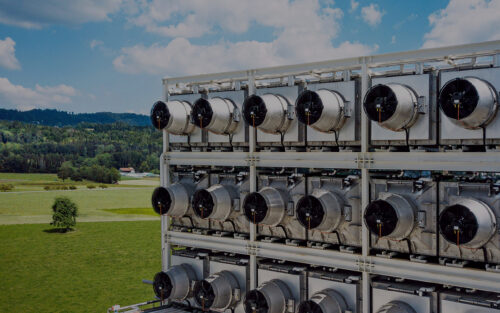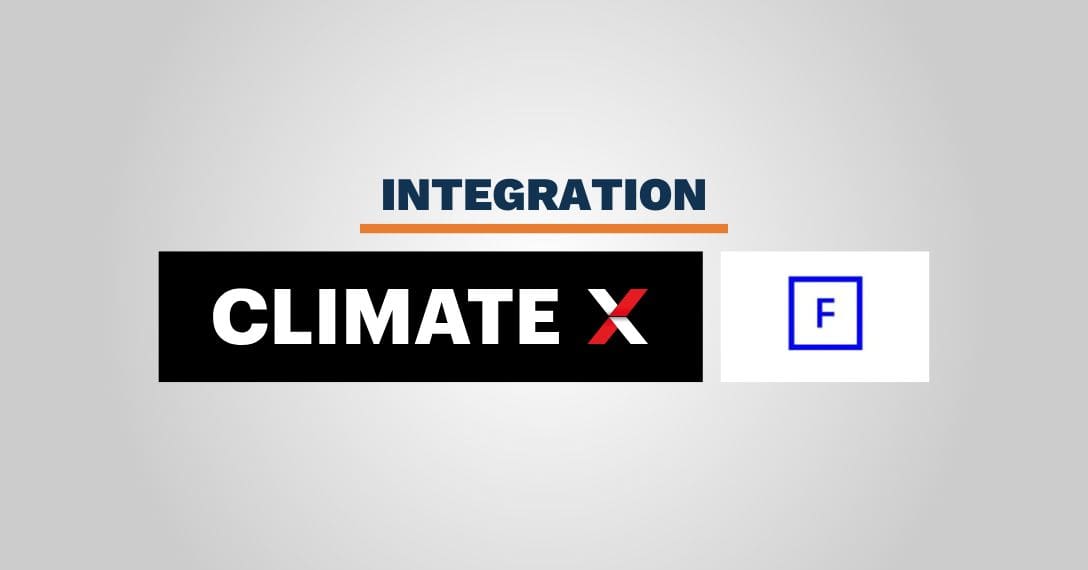Integrating Carbon Dioxide Removal into Clean Energy and Climate Transitions – Nature

Report on Carbon Dioxide Removal in the Context of Sustainable Development Goals
This report outlines a research initiative focused on advancing Carbon Dioxide Removal (CDR) technologies and practices, with a significant emphasis on their alignment with key United Nations Sustainable Development Goals (SDGs), specifically SDG 7 (Affordable and Clean Energy), SDG 11 (Sustainable Cities and Communities), and SDG 13 (Climate Action).
The Imperative for CDR and SDG 13: Climate Action
The necessity for large-scale Carbon Dioxide Removal is underscored by rising global temperatures and a diminishing carbon budget. In line with SDG 13: Climate Action, the Intergovernmental Panel on Climate Change (IPCC) has established that gigaton-scale CDR deployment by mid-century is an essential strategy. This is required to complement aggressive emissions reductions by addressing both residual emissions and legacy atmospheric carbon, thereby strengthening the global response to the threat of climate change.
Deployment Challenges and Alignment with Sustainable Development
The real-world deployment of promising CDR approaches, including direct air capture (DAC), bioenergy with carbon capture and storage (BECCS), and ocean-based removal, presents significant challenges. These challenges directly impact the objectives of multiple SDGs.
- Energy and Resource Demands: The high energy requirements of some CDR methods pose a challenge to SDG 7: Affordable and Clean Energy if not powered by renewable sources.
- Land Use and Equity: Land use competition and potential environmental harms risk undermining SDG 11: Sustainable Cities and Communities, particularly in frontline and Global South communities.
Without integrated planning that prioritizes sustainability and justice, CDR could reinforce existing inequities and fail to contribute effectively to global climate goals.
A Research Agenda for Integrated and Equitable CDR
This research initiative seeks to advance CDR science and practice by promoting interdisciplinary innovation and actionable frameworks. The primary goal is to ensure that the scaling of durable carbon removals is integrated with broader systems-level decarbonization, circular resource use, and just climate transitions, directly supporting the interconnected nature of the SDGs.
A call is issued for Original Research, Reviews, and Perspectives on the following key themes:
-
Coupling CDR with Renewable Energy Systems (SDG 7)
This theme focuses on the synergy between CDR and clean energy. Research is invited on:
- Innovations in BECCS, DAC with Carbon Capture and Storage (DACCS), and ocean alkalinity enhancement (OAE).
- Strategies for co-locating CDR facilities with renewable energy infrastructure.
- Lifecycle integration across marine and terrestrial domains to advance SDG 7.
-
Biomass-Based Carbon Removal (SDG 11 & SDG 13)
This area explores the sustainable use of biomass for carbon removal, addressing critical tradeoffs related to land, food, and energy systems. This is vital for achieving the climate targets of SDG 13 without negatively impacting the sustainable land-use goals of SDG 11.
-
CDR in Urban and Regional Climate Planning (SDG 11)
Focusing on SDG 11: Sustainable Cities and Communities, this theme seeks research on:
- Integration of CDR into urban green infrastructure (e.g., mineralization, biochar use).
- Land-use planning tools and policy design for DAC siting at subnational levels.
- Case studies from the Global South to ensure inclusive and resilient urban development.
-
Policy, Market, and Equity Frameworks (SDG 11 & SDG 13)
To ensure CDR contributes positively to sustainable development, robust governance is required. This theme addresses the need for frameworks that promote market transparency, community consent, and equitable benefit-sharing, which are foundational for the successful implementation of both SDG 11 and SDG 13.
-
Digital and Emerging Technologies for Scalable CDR
This theme examines the role of technology in optimizing CDR deployment in support of the SDGs. Research areas include the use of AI/ML for system optimization, innovations in Monitoring, Reporting, and Verification (MRV), and the development of digital tools for dynamic facility design and deployment.
1. Which SDGs are addressed or connected to the issues highlighted in the article?
-
SDG 7: Affordable and Clean Energy
The article explicitly states its connection to SDG 7. It discusses the high “energy demand” of Carbon Dioxide Removal (CDR) technologies and calls for research on “Coupling CDR with Renewable Energy Systems.” This directly links the challenge of scaling up CDR to the need for clean and affordable energy sources to power it sustainably.
-
SDG 11: Sustainable Cities and Communities
The article explicitly mentions its relevance to SDG 11. It highlights a specific research theme on “CDR in Urban and Regional Climate Planning,” which includes the “Integration into urban green infrastructure,” “DAC siting,” and “land-use planning tools.” This shows a clear focus on implementing climate solutions within the context of urban development.
-
SDG 13: Climate Action
This is the central theme of the article, which is explicitly linked to SDG 13. The entire text is framed around the necessity of CDR to combat rising global temperatures, meet the 1.5°C goal, and address “residual emissions and legacy carbon,” as outlined by the IPCC. The article’s purpose is to “advance CDR science and practice” as a critical climate action strategy.
2. What specific targets under those SDGs can be identified based on the article’s content?
-
Target 7.2: By 2030, increase substantially the share of renewable energy in the global energy mix.
The article directly supports this target by inviting research on “Coupling CDR with Renewable Energy Systems.” It recognizes that for CDR methods like Direct Air Capture (DAC) to be a net positive for the climate, they must be powered by clean energy. The focus on “innovations in BECCS, DACCS, and ocean alkalinity enhancement (OAE)” integrated with renewables points to efforts to increase the renewable energy share.
-
Target 11.b: By 2020, substantially increase the number of cities and human settlements adopting and implementing integrated policies and plans towards inclusion, resource efficiency, mitigation and adaptation to climate change…
The article addresses this target by focusing on “CDR in Urban and Regional Climate Planning” and “subnational policy design.” It calls for research on integrating CDR into city-level strategies, such as through “urban green infrastructure” and “land-use planning tools,” which are core components of the integrated climate plans mentioned in the target.
-
Target 13.2: Integrate climate change measures into national policies, strategies and planning.
This target is central to the article’s discussion on “Policy, Market, and Equity Frameworks.” The call for research on “enabling governance, Article 6 implications, market transparency, community consent, and equitable benefit-sharing” is about creating the necessary policy structures to integrate large-scale CDR into national and international climate strategies.
3. Are there any indicators mentioned or implied in the article that can be used to measure progress towards the identified targets?
-
Implied Indicator for Target 7.2: Integration level of renewable energy in CDR projects.
While not a formal UN indicator, the article implies a need to measure the success of “Coupling CDR with Renewable Energy Systems.” Progress could be measured by the percentage of CDR facilities powered by renewable sources or the development of “co-location strategies” that optimize energy use, directly reflecting an increase in the renewable energy share for this specific new industry.
-
Implied Indicator for Target 11.b: Number of cities with integrated CDR strategies in their climate action plans.
The article’s focus on “CDR in Urban and Regional Climate Planning” and “case studies from the Global South” implies that a key measure of success would be the adoption of these technologies and plans at the city level. Tracking the number of municipalities that have developed “land-use planning tools” or policies for “DAC siting” would serve as a direct indicator of progress.
-
Implied Indicator for Target 13.2: Existence of national governance and policy frameworks for CDR.
The article’s call for research on “Policy, Market, and Equity Frameworks” and “enabling governance” suggests that a key indicator of progress is the establishment of such frameworks. The development of national policies that address CDR, including its “Article 6 implications” and rules for “market transparency,” would be a tangible measure of how climate change measures are being integrated into national planning.
4. Table of SDGs, Targets, and Indicators
| SDGs | Targets | Indicators |
|---|---|---|
| SDG 7: Affordable and Clean Energy | Target 7.2: Increase substantially the share of renewable energy in the global energy mix. | Implied Indicator: The level of integration and co-location of CDR technologies (DAC, BECCS) with renewable energy systems. |
| SDG 11: Sustainable Cities and Communities | Target 11.b: Increase the number of cities adopting and implementing integrated policies and plans for climate change mitigation. | Implied Indicator: The number of urban and regional climate plans that incorporate CDR strategies, such as DAC siting, biochar use, and mineralization in green infrastructure. |
| SDG 13: Climate Action | Target 13.2: Integrate climate change measures into national policies, strategies and planning. | Implied Indicator: The establishment of national and subnational “Policy, Market, and Equity Frameworks” for governing and scaling CDR, including addressing “Article 6 implications.” |
Source: nature.com

What is Your Reaction?
 Like
0
Like
0
 Dislike
0
Dislike
0
 Love
0
Love
0
 Funny
0
Funny
0
 Angry
0
Angry
0
 Sad
0
Sad
0
 Wow
0
Wow
0



























;Resize=805#)




















































